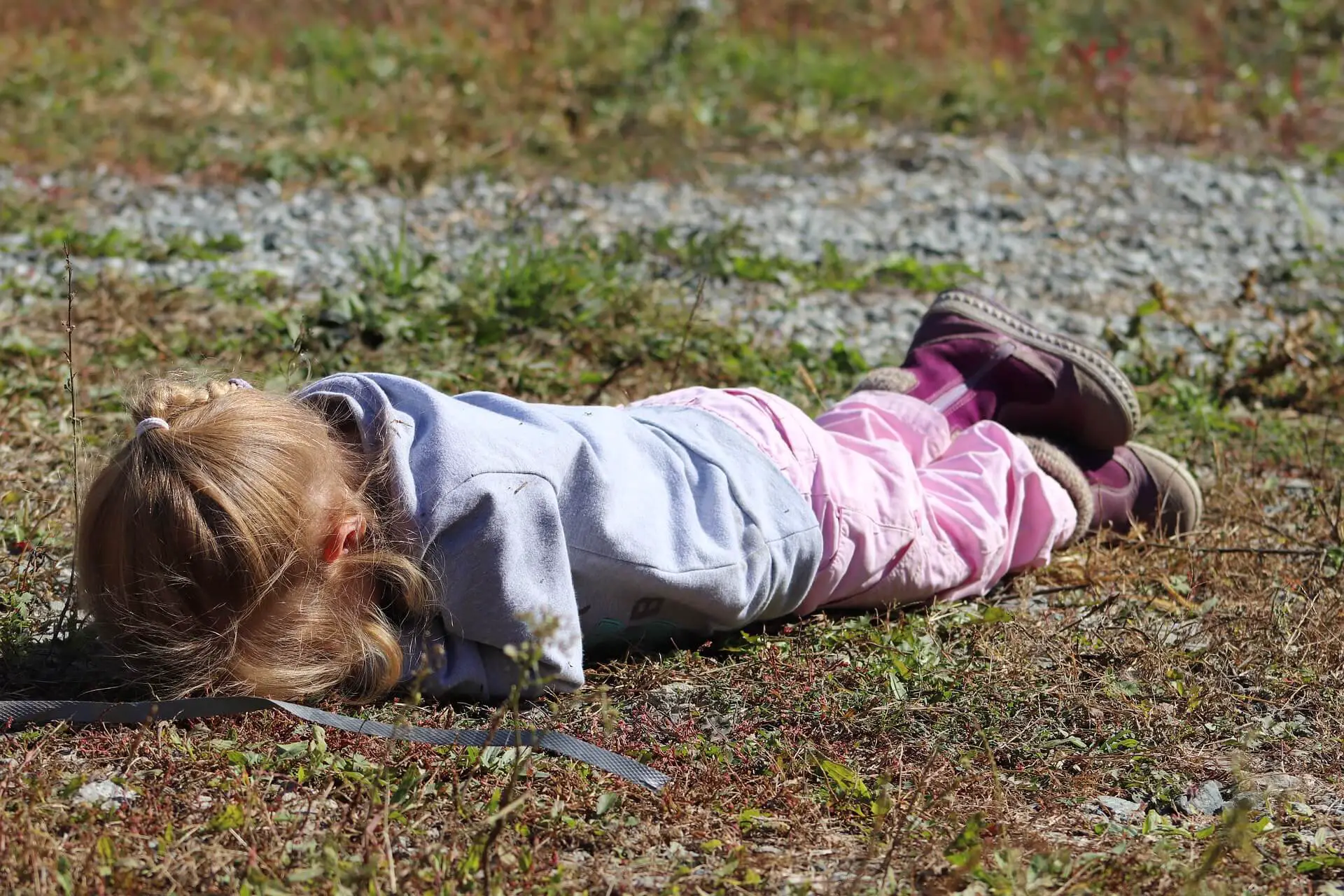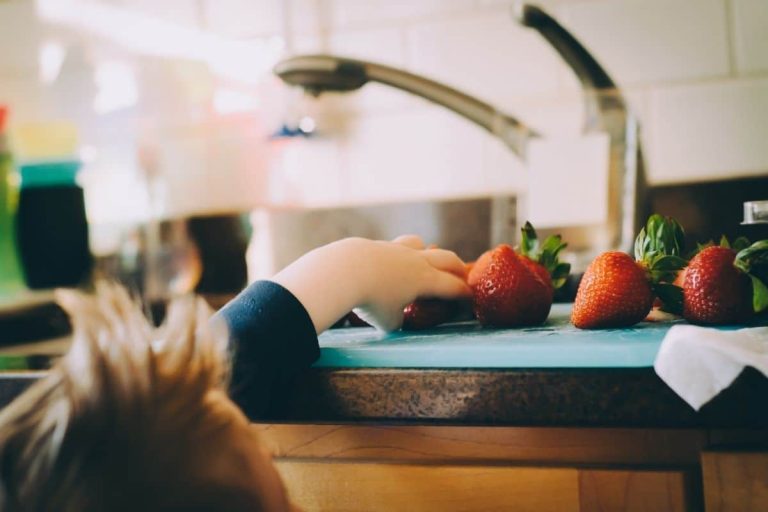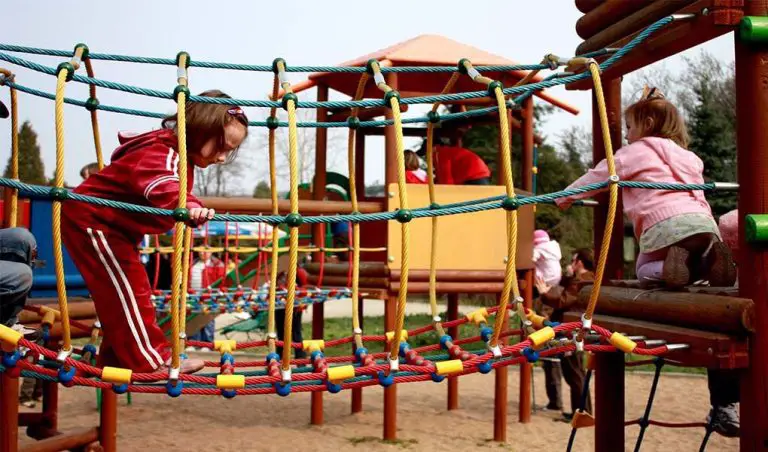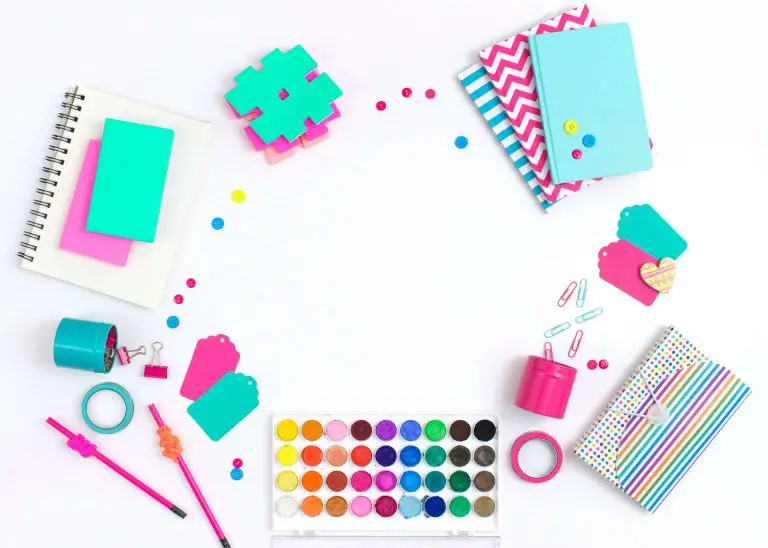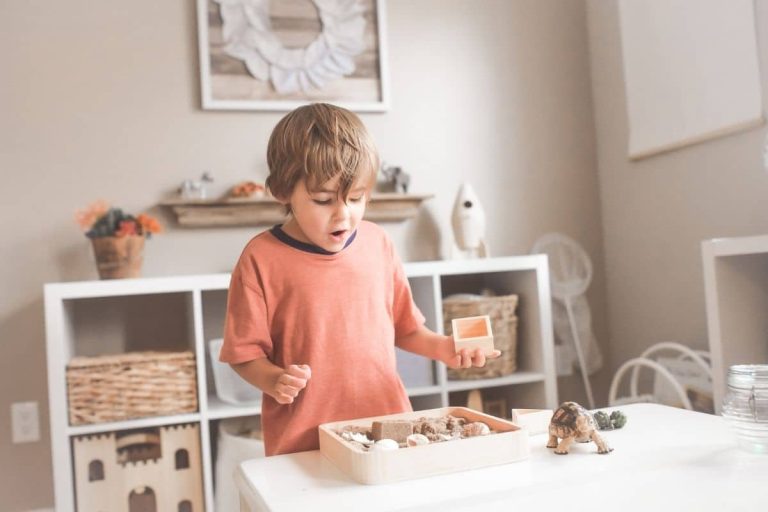The Two-Year-Old Crisis. How To Handle Toddler Tantrums
Have you heard of the “terrible twos”? A big part of the terrible reputation of two-year-olds is because of temper tantrums. But it’s not that scary if you know how to handle toddler tantrums like a pro.
Maybe you’re already experiencing it and looking for a solution. Or maybe you’re approaching this 2 years mark and want to know what to expect.
Note: This post may contain affiliate links, which means if you buy from my link I might make a small commission. This does not affect the price you pay. See the full affiliate disclosure here.
In any case, you’ve come to the right place.
What is a toddler temper tantrum?
A temper tantrum appears when a toddler is unable to cope with strong emotions such as anger, disappointment, or frustration.
Since they are not yet able to express their big feelings adequately, they do so by crying, screaming, throwing things, stomping, kicking, hitting, biting. In some cases, even holding their breath.
The types of toddler tantrums

Two main types can be identified and the key to how to handle toddler tantrums is to learn to recognize them. Don’t worry, though, it’s not that hard.
Emotional meltdown
Emotional tantrums are usually associated with young children aged 2-3 years old.
Their brain is still underdeveloped to be able to take control over their emotions. Thus, sometimes the emotional part of their brain, known as the limbic, gets too stimulated and overpowers the thinking part, i.e. the prefrontal cortex.
In simpler words, emotional tantrums are a completely normal part of child development.
Most importantly, they are not a way for your toddler to try to manipulate you. They’re just not able to express themselves and control their feelings.
Non-emotional tantrums
The non-emotional type is also known as Little Nero. They appear in older children (aged 3.5-4 years old) and are usually a result of associated learning.
Meaning, the child hasn’t learned emotional regulation yet, but they know that you’ll give them what they want if they start screaming.
You can usually recognize these by the lack of a painful expression on your kid’s face.
In many cases, what started as a non-emotional tantrum usually ends up as an emotional meltdown, since 4-year-olds are still not masters over their emotions either.
Why do toddlers have temper tantrums?
Little babies are used to getting your full attention and unconditional love. They know that you’ll meet their every need, that you’ll always be there for them. In a way, they believe that the world revolves around them.
When they reach toddlerhood, however, parents start setting rules and boundaries which is something completely new to them. And usually, something they don’t like at all.
Since they are not able to control their emotions their reaction is sudden and strong. And to top it all, their limited vocabulary at this young age prevents them from properly expressing themselves.
With this said, experiencing a temper tantrum is a completely normal stage in growing up and can happen over the smallest of things like:
- You’ve told them to put their shoes on before going out.
- Someone drank their juice (even though it was them).
- You don’t let them eat dirt from the flowers.
- The cat doesn’t want to run around and play with them.
- They are unable to express what they want to tell you.
- They are unable to make a toy do what it’s supposed to do (when it’s too advanced for them.)
And while all kids experience this stage in one way or another, if you know how to handle toddler tantrums before they’ve burst out, you’ll save yourself a lot of headaches and little one’s tears.
When do tantrums start and end?
Kids usually start having tantrums around the 18 months mark and have their peak around 2-2.5 years old. Therefore, this period is often called the “terrible twos”.
However, with some kids, a temper tantrum could start as early as 12 months old, when the child is mobile enough to want to explore their surroundings but still doesn’t have the vocabulary to express their wants and feelings.
Around the age of 4 kids usually learn to control their emotions better. Thus, this is the period when tantrums usually come to an end.
When to be disturbed?
Tantrums are most common for kids aged 18 months to 3 years. Some older kids, however, experience tantrums after the 4 years mark.
This could be a sign that your kid still doesn’t have the skills required to be able to properly control their emotions. In some rare cases, this could also be a signal for disorders such as ADHD and autism.
If your 4-year-old keeps throwing frequent tantrums and has a hard time calming down afterwards, you may want to discuss this with the child’s doctor.
In other cases in which you may need to turn to a specialist earlier. These include:
- The toddler holds their breath for long periods of time while in a tantrum. This can result in fainting and should be addressed immediately.
- They are prone to hurt themselves or others around them. If your toddler is frequently showing signs of aggression in the middle of a tantrum it is best if you discuss this with a child psychologist.
How to handle toddler tantrums?

When you find yourself in the middle of your child’s tantrum don’t be quick to panic.
The below steps will guide you exactly how to handle toddler tantrums and have been tested by me and my mom friends.
They work 100%, so read on.
Understand the reason
In most cases, the reason is pretty obvious. They’ll just yell it in your face.
In other cases, however, you may need to think about it first. Is it just whimsy, are they tired, hungry, overwhelmed by the place or the situation?
To be able to act accordingly, first, you need to know why they are upset.
Should you ignore the toddler tantrum?
If you’re certain that your toddler is having a non-emotional tantrum, ignoring it may be a good option to try. However, if you believe that they may be experiencing an emotional meltdown, ignoring it may just increase their frustration.
Furthermore, when you react accordingly instead of ignoring them, you are helping them learn to control their emotions.
Parents who choose to ignore the toddler’s tantrum usually apply the so-called time outs.
To be honest, I don’t really believe that time outs have any positive effect on controlling their emotional outburst.
For those of you who are not aware of the term, a time out means to leave the child alone in a non-distractive and safe place for a few minutes. It is mostly used by parents when the toddler has shown any form of aggression like hitting or biting.
I haven’t tried it because the tactics below are working fine for us, but I just feel like time outs are a form of emotional punishment. Something like the “cry it out” method in sleep training.
However, if positive discipline doesn’t seem to be working and the tantrums are getting worse, I guess this is the last resort before turning to a clinical psychologist.
Don’t even try to reason with them
As we explained above, when a toddler is in the middle of a tantrum, the emotional part of the brain has completely overpowered the thinking part.
This said, trying to reason with a toddler in an emotional meltdown is completely useless. What’s more, it could make things even worse because it may seem to them that you just don’t understand.
Stay calm and positive
You know kids mimic the actions (and reactions) of their parents, right?
Well, think about this then.
If you get angry and start yelling while they’re in a tantrum (something you don’t like), what they see is that this is an acceptable way to react to something they don’t like.
Furthermore, even adults get nervous and feel the urge to start yelling when someone else is yelling in front of them, imagine the effect on someone who is still unable to control their big emotions.
Long story short, to be able to handle their mood, you need to handle yours first. So take a deep breath, remain calm and positive, and proceed with the next steps.
Restore emotional balance
Once you’ve got a hold of yourself it’s time to calm your little one too.
It is actually proven that you can restore their hormonal levels by holding and hugging them. This simple action triggers the oxytocin production in their body, allowing them to restore their emotional balance.
By the way, did you know that oxytocin is also known as the “love hormone”?
For this trick to work, however, it is very important that you’re already calm, otherwise, you may stress them even more.
Another thing that works like a charm with my toddler is also getting on her eye level when I talk to her during a tantrum. Just try to look into their eyes and talk in a soft calm voice, hold their hand or caress their cheek.
Trust me, it works.
Don’t give in
Being positive doesn’t mean giving in to their whimsy. All you need to do is to give in a few times and they will know that crying and screaming is the best way to get what they want.
Be firm but kind and set your boundaries.
Offer a simple choice
Giving them a chance to choose on their own is often a great way to distract the toddler from their anger or frustration. Be sure to formulate your question so that you give them a choice without backing out.
For example, if they don’t want to get dressed in the morning ask them if they like the red or the green shirt better. If they refuse to eat their dinner, ask them if they want to eat the veggies or the meat first.
Just be sure to avoid questions like “Do you want to eat your veggies?” because it is pretty sure that the answer would be No.
Create a distraction
One way to distract the child’s attention is by offering them something else. For example, when my toddler screams for juice but we don’t have it at the moment, offering her yogurt (which she loves) often makes her forget about the juice in the first place.
Unfortunately for the parents, tantrums often happen in a public place like the grocery store. So instead of thinking rationally, many parents just panic and get stressed out themselves.
Don’t worry, though. The same tips on how to handle toddler tantrums work for a public tantrum as well.
So if the next time the child’s meltdown is caused by a place or a situation, just leave as soon as possible and go to a more quiet, neutral place so they can calm down away from the tantrum triggers.
Don’t punish them for it
As we already mentioned, a toddler’s tantrum is something completely natural and part of the child development at this age. So don’t punish them over something they have no control over.
Instead, practice positive parenting and wbe consistent in teaching them to react more calmly.
By supporting them even in such hard moments you’re showing them that they can trust you and that you believe in them. This will eventually help them build a more confident, balanced, and independent character.
Remember it’s just a phase
Handling tantrums is hard.
Even though I try to stay calm every time I sometimes need a minute or two to calm myself, especially when it’s been a particularly hard day.
But one thing that helps me is remembering that this is just a phase. Just like colic and teething before that.
It will pass, and how you’ll handle it will affect their personality later on.
How to prevent toddler tantrums from happening

While it’s helpful to know how to handle toddler tantrums, wouldn’t it be great if they weren’t happening at all? Or at least you were facing fewer tantrums!
There are ways you can achieve this as long as you’re consistent. Let me tell you how.
Set clear boundaries
From a very young age, your kids should know what’s allowed and what’s not.
If you don’t want to give them sweets before dinner, don’t offer them once in a while. If there are drawers they shouldn’t go through, tell them No as soon as you notice they are showing interest in them.
And most importantly, do this in a firm but calm and kind way.
Also, make sure to keep off-limit items out of sight and reach whenever possible. This way you’ll avoid having to explain why the scissors are not a good toy or why the strawberry-scented shaving cream is not supposed to be eaten.
Help them express themselves
People tend to take communication and language skills for granted. For a toddler, however, this is something they learn every day.
A big part of tantrums is caused by the toddler’s irritation because they cannot express what they want and feel. And when you cannot guess immediately, and most of all correctly, their emotion takes control.
A few basic tips:
- Talk to them about feelings, how to recognize them, and how to name them.
- Engage them in turn-taking conversation.
- Explain how their actions affect the others around them.
Maintain a nap routine
Little kids are more likely to throw tantrums when they feel tired. Luckily, this common trigger can be easily avoided by maintaining a nap routine.
A 1-2 years old toddler needs approximately 2-3 hours of daytime sleep divided into 1 or 2 naps. Kids over 3 years of age usually require about an hour but can go without a nap as well.
However, kids are very different. And if your kid is throwing frequent tantrums, this may signal that they are just not getting enough sleep.
Personally, I plan to maintain our nap routine at least until the age of 5.
Identify and avoid tantrum triggers
Although it may seem so, tantrums don’t just happen out of nowhere. There are always triggers that can be avoided if you know what to look for.
The three most common triggers include:
- Hunger. Your toddler may be screaming for ice cream but in reality, they may be just hungry after a long walk or playdate. Keeping some healthy snacks around can help a lot.
- Loneliness. Toddlers love attention. They are used to it since the baby phase and leaving them on their own for a while could make them sad and lonely and prone to emotional meltdowns.
- Tiredness. When kids are tired they get cranky, it’s as simple as that. A nap and bedtime routine usually does the trick.
In other cases, the trigger may be the situation itself. Like leaving the playground or (our most common case) getting up early in the morning.
Such cases cannot be avoided so it helps if you have a plan on how to handle toddler tantrums before they have burst to the fullest. For example, tell them you’ll give them something they love, or that something else is going to happen as soon as they do what they have to.
For our early morning, it helps a lot when I tell her that daddy is waiting for her downstairs with some juice (two things she just can’t get enough of).
Give them a sense of control
Allow them the freedom to make their own choices whenever possible. This will boost their confidence and independence.
You can ask them which clothes they want to wear today, whether they want orange or banana juice, or if they want to brush their teeth or have a bath first.
Praise good behaviour
When your child does something good, praise them for it. In time they will learn that good behaviour is rewarded, while bad behaviour is not.
You can also help them learn different new skills and praise their accomplishment, however small they are. This includes even trivial skills like potty training, drinking from a cup, driving a bike, saying things like “Thank you” and “You’re welcome”, and anything else that comes along.
Your positive attention this early in their life can shape their character.
Choose your battles
Not every child request is worth fighting over. If they like a song so much that they want to listen to it over and over again, what’s the big deal?
Save your “No” -s for the things that actually matter.

